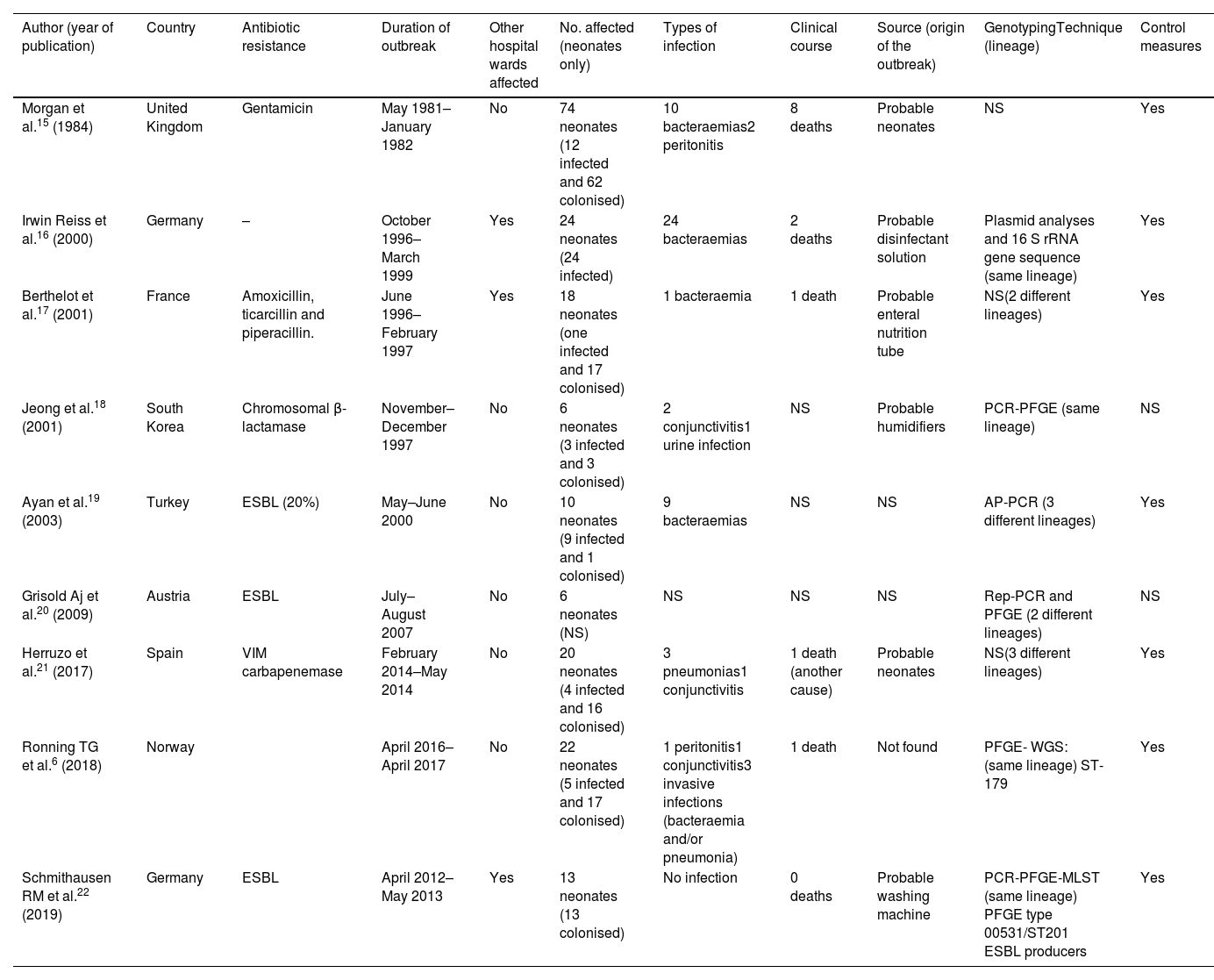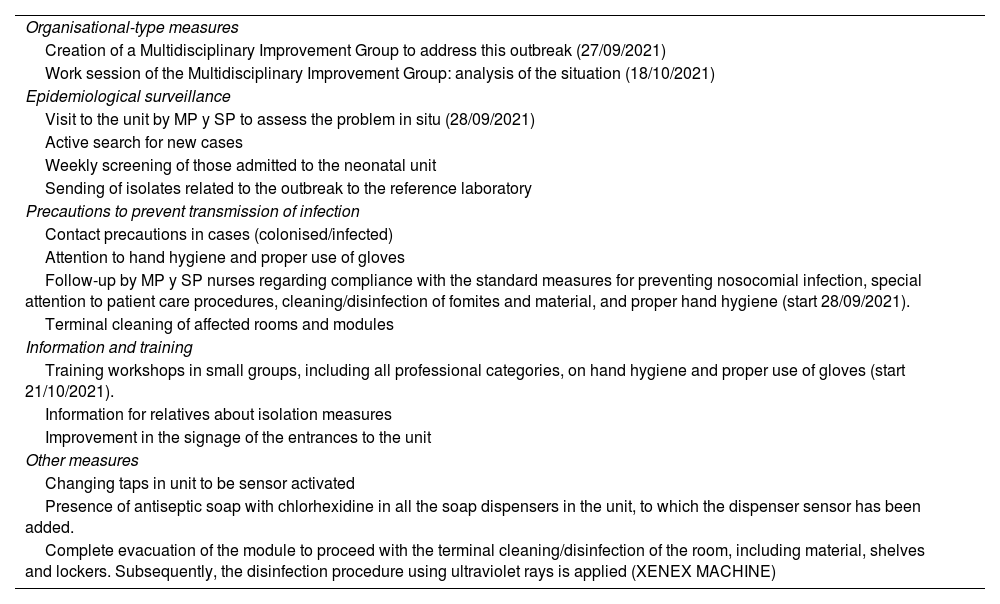Klebsiella oxytoca can cause nosocomial infections, affecting vulnerable newborns. There are few studies describing nosocomial outbreaks in the neonatal intensive care units (NICU). In this study, a systematic review of the literature was carried out to know the main characteristics of these outbreaks and the evolution of one is described.
MethodsWe conducted a systematic review in the Medline database up to July 2022, and present a descriptive study of an outbreak with 21 episodes in the NICU of a tertiary hospital, between September 2021 and January 2022.
Results9 articles met the inclusion criteria. The duration of outbreaks was found to be variable, of which 4 (44.4%) lasted for a year or more. Colonization (69%) was more frequent than infections (31%) and the mortality rate was 22.4%. In studies describing sources, the most frequent was the environmental origin (57.1%). In our outbreak there were 15 colonizations and 6 infections. The infections were mild conjunctivitis without sequelae. Molecular typing analysis made it possible to detect 4 different clusters.
ConclusionsThere is an important variability in the evolution and results of the published outbreaks, highlighting a greater number of colonized, use of PFGE (pulsed-field gel electrophoresis) techniques for molecular typing and implementation of control measures. Finally, we describe an outbreak in which 21 neonates were affected with mild infections, resolved without sequelae and whose control measures were effective.
Klebsiella oxytoca puede causar infecciones nosocomiales, afectando a recién nacidos vulnerables. Existen escasos trabajos que describan brotes nosocomiales en las unidades de cuidados intensivos neonatales (UCIN). En este estudio se realiza una revisión sistemática de la literatura para conocer las características principales de estos brotes y se describe la evolución de uno.
MétodosSe realizó una revisión sistemática, en la base de datos Medline hasta julio de 2022, y un estudio descriptivo de un brote con 21 episodios en la UCIN de un hospital de tercer nivel, desde septiembre 2021 a enero 2022.
Resultados9 artículos cumplían los criterios de inclusión. Se encontró que la duración de los brotes fue variable, de los que 4 (44,4%) se prolongaron durante un año o más. Las colonizaciones (69%) fueron más frecuentes que las infecciones (31%) y la tasa de mortalidad fue del 22,4%. En los estudios que describen las fuentes, lo más frecuente fue el origen ambiental (57,1%). En nuestro brote hubo 15 colonizaciones y 6 infecciones. Las infecciones fueron conjuntivitis leves sin secuelas. El análisis mediante tipado molecular permitió detectar 4 clústeres diferentes.
ConclusionesExiste una variabilidad importante en la evolución y resultados de los brotes publicados, destacando un mayor número de colonizados, uso de técnicas de PFGE (electroforesis en campo pulsado) para tipado molecular e implantación de medidas de control. Finalmente, describimos un brote en el que se afectaron 21 neonatos con infecciones leves, resueltas sin secuelas y cuyas medidas para el control de este resultaron eficaces.
Article
Socio de la Sociedad Española de Enfermedades Infecciosas y Microbiología Clínica

Para acceder a la revista
Es necesario que lo haga desde la zona privada de la web de la SEIMC, clique aquí
Para realizar los cursos formativos
La actividad estará abierta para socios de la SEIMC. IMPORTANTE, recuerde que requiere registro previo gratuito. Empezar aquí












